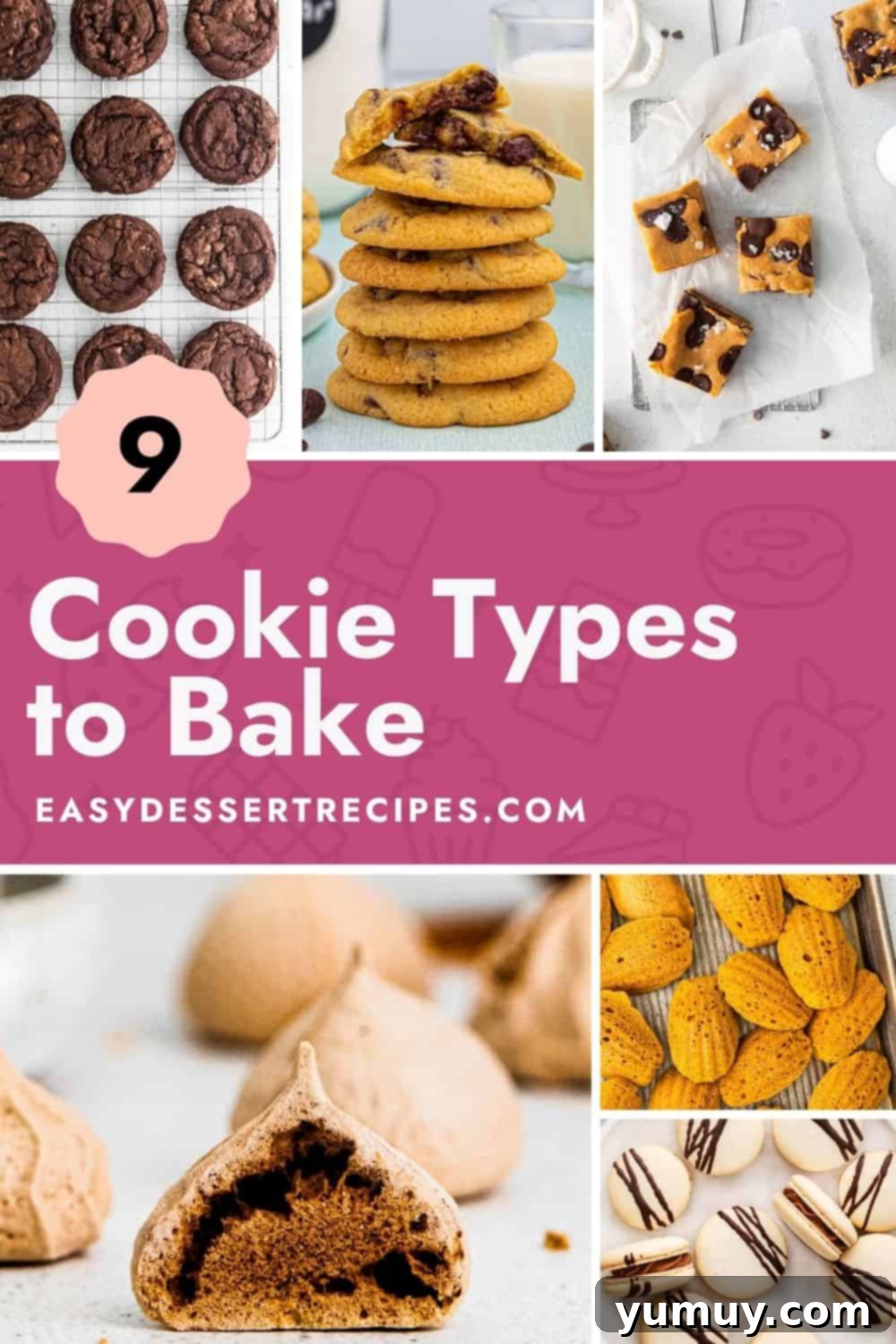The aroma of freshly baked cookies is one of life’s simplest and most comforting pleasures. From the classic crunch of a sugar cookie to the gooey embrace of a chocolate chip masterpiece, cookies come in an astonishing array of shapes, sizes, and textures. For any enthusiastic home baker, understanding the different types of cookies isn’t just a fun fact; it’s a foundational skill that unlocks a world of culinary creativity and helps you master countless recipes with confidence.
While the basic building blocks of most cookies—flour, sugar, butter (or another fat), and eggs—remain consistent, it’s how these ingredients are combined, shaped, and handled that truly defines their category. Each method results in a distinct cookie experience, influencing everything from the dough’s consistency to the final product’s chewiness, crispiness, or density. Dive into this comprehensive guide to explore the nine primary cookie types, unraveling the secrets behind their unique characteristics and helping you bake like a pro!

Why Understand Different Cookie Types?
Baking cookies is a delightful journey, and knowing the classification of different cookie types serves as your roadmap. This knowledge goes beyond just identifying a recipe; it empowers you to predict baking outcomes, choose the right tools, and even troubleshoot when things don’t go exactly as planned. Whether you’re aiming for a tender, cake-like cookie or a crisp, buttery treat, understanding the dough’s behavior and the shaping method is key to achieving your desired results every time.
At their core, all cookies rely on a delicate balance of fat, sugar, flour, and eggs. These ingredients interact in complex ways to create the final texture. For instance, the amount of fat affects tenderness, sugar contributes to browning and crispness, and flour provides structure. However, the true magic happens in the handling and forming of the dough, which is precisely how we categorize these beloved treats into distinct types.
9 Essential Types of Cookies Every Baker Should Know
Ready to broaden your baking horizons? Here are the nine fundamental cookie categories that form the backbone of the cookie world:
- Drop Cookies
- Rolled (Cut-Out) Cookies
- Cookie Bars
- Pressed Cookies
- Refrigerator/Icebox Cookies (Slice and Bake)
- Molded Cookies
- Filled/Stuffed Cookies
- Sandwich Cookies
- No-Bake Cookies

1. Drop Cookies
Perhaps the most quintessential and beloved cookie type, drop cookies are characterized by their simple, casual formation. As the name suggests, the dough is literally “dropped” or scooped from a bowl directly onto a baking sheet. This method is incredibly popular because it’s straightforward, requires minimal special equipment, and often yields delightfully soft and chewy results.
The dough for drop cookies is typically soft, pliable, and easily scoopable, often containing a generous amount of mix-ins like chocolate chips, nuts, dried fruit, or candies. When scooped, the dough forms a rustic mound that then spreads and flattens during baking, creating those signature irregular edges. While generally soft and chewy, the exact texture can be adjusted by varying baking time – longer baking results in a crisper cookie, while shorter baking keeps them tender.
Dough Characteristics: Soft, often sticky, and easily malleable. It should be firm enough to hold its shape when scooped but soft enough to spread during baking. The consistency allows for a wide variety of additions without making the dough too stiff.
Baking Process: Simply scoop spoonfuls or use a cookie scoop to place dough balls onto a parchment-lined baking sheet. Ensure adequate spacing as they will spread. Baking time is usually relatively short, resulting in soft centers and slightly crispy edges.
Typical Outcome: Often chewy in the center with slightly crispy edges, though some variations can be softer and cake-like or thinner and crispier. They are known for their comforting, homemade appearance.
Examples: Classic chocolate chip cookies, oatmeal cookies, peanut butter cookies, and white chocolate macadamia nut cookies are all prime examples of drop cookies.
What You’ll Need: A sturdy baking sheet (rimmed is best to prevent cookies from sliding off) and a cookie scoop or two spoons for portioning the dough. Parchment paper or silicone baking mats are highly recommended for non-stick results and easy cleanup.
Drop Cookie Recipes to Try: Cookies and Cream Cookies, Lucky Charms Cookies, and Funfetti Cookies.


2. Rolled and Cut-Out Cookies
These cookies are synonymous with special occasions, intricate designs, and decorative flair. Rolled cookies, often referred to as cut-out cookies, involve a process where a relatively stiff dough is rolled out flat with a rolling pin and then cut into various shapes using cookie cutters, a knife, or a pastry wheel. This method allows for incredible precision and artistic expression, making them perfect for holiday celebrations or personalized gifts.
The dough for rolled cookies needs to be firm enough to hold its shape after being cut and transferred to a baking sheet, yet still pliable enough to be rolled without cracking. Chilling the dough before rolling is a crucial step that helps prevent stickiness and ensures cleaner cuts and less spreading during baking. The resulting cookies are typically denser and hold their shape well, often serving as a canvas for royal icing or other decorations.
Dough Characteristics: Stiffer and less sticky than drop cookie dough. It’s often made with a higher fat-to-flour ratio to ensure tenderness while maintaining structure. Chilling is almost always required to firm up the butter and make the dough easier to handle.
Baking Process: Dough is rolled to an even thickness (usually 1/4 to 1/2 inch) on a lightly floured surface. Shapes are cut and carefully transferred to a baking sheet. These cookies are typically baked until edges are lightly golden, ensuring they remain firm but tender.
Typical Outcome: Crisp or firm, with well-defined edges that hold their intricate shapes. They are less prone to spreading, making them ideal for elaborate decorating.
Examples: Classic sugar cookies, gingerbread men, and shortbread cookies are excellent examples of rolled and cut-out varieties. Linzer cookies, with their jam-filled centers, also fall into this category.
What You’ll Need: A good quality rolling pin, an array of cookie cutters in various shapes, and a pastry wheel or sharp knife for straight cuts. A clean, lightly floured surface or parchment paper is essential for rolling.
Cut-out Cookie Recipes to Try: Classic Linzer Cookies, Pumpkin Sugar Cookies, Chocolate Chip Cookie Fries, Funfetti Shortbread Cookies.
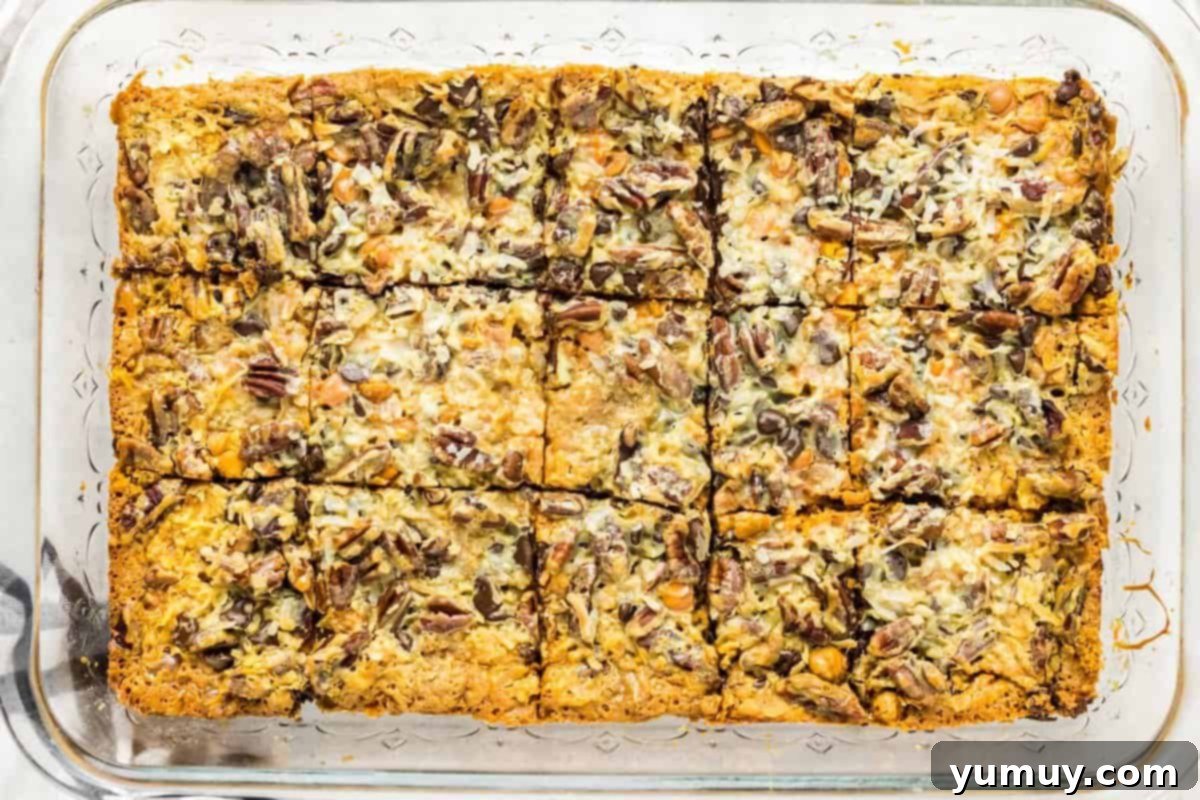
3. Cookie Bars
For sheer convenience and generous portions, cookie bars are an absolute winner. These cookies defy the individual shaping process, instead being baked in a single batch within a pan (usually square or rectangular) and then sliced into squares or rectangles after cooling. This method makes them incredibly efficient for feeding a crowd or for times when you want all the deliciousness of a cookie without the fuss of scooping or cutting individual pieces.
The batter for cookie bars can range from soft and pourable (like a brownie) to firmer and pressed (like some shortbread bars). What defines them is the baking vessel and the post-bake cutting. They are generally denser and thicker than typical drop cookies, offering a satisfying chew and a hearty texture that makes them incredibly portable and easy to enjoy by hand. Many classic desserts you might not immediately think of as “cookies,” such as brownies or blondies, technically fall under the cookie bar umbrella due to their preparation method.
Dough/Batter Characteristics: Varies from thick and pliable (often pressed into the pan) to a more liquid batter (poured). It’s designed to bake evenly within a confined space, resulting in a consistent texture throughout the bar.
Baking Process: The dough or batter is spread evenly into a greased and often parchment-lined baking pan. It’s then baked until set, and typically cooled completely before being cut into individual portions.
Typical Outcome: Dense, moist, and often chewy or fudgy, depending on the recipe. They are uniform in size and are great for layering different textures and flavors.
Examples: Fudgy brownies, blondies, lemon bars, and layered magic bars are perfect examples of this versatile cookie type. They often feature various toppings or mix-ins baked right into the batter.
What You’ll Need: Square or rectangular baking pans (such as 8×8, 9×9, or 9×13 inches) are essential. Parchment paper is often used to line the pan, making it easy to lift out the baked slab for clean slicing. A sharp knife or bench scraper is useful for cutting neat bars.
Cookie Bar Recipes to Try: Chocolate Chip Cookies Bars, 7 Layer Magic Cookie Bars, Lemon Shortbread Cookies, and Strawberry Lemonade Sugar Cookie Bars.
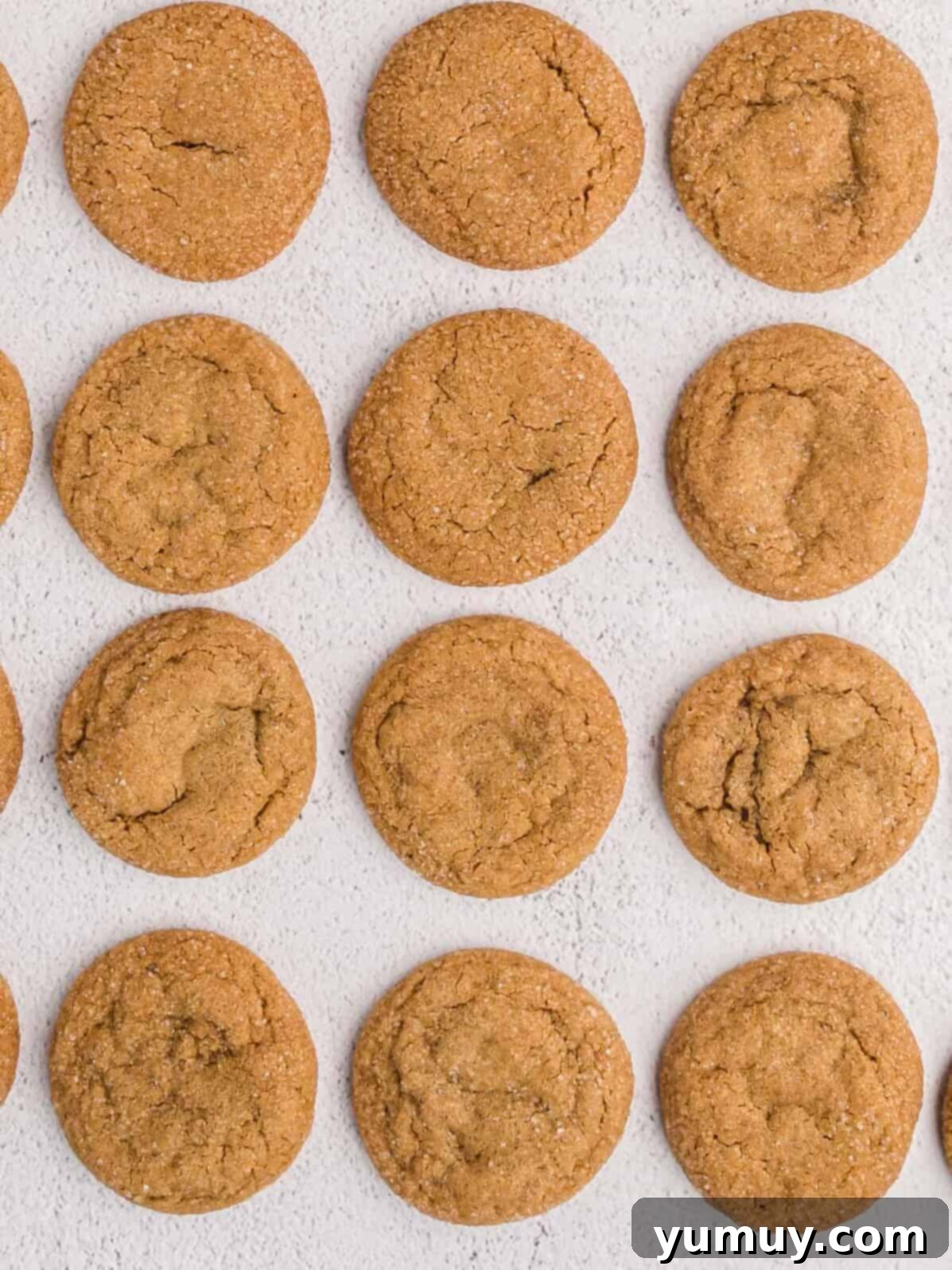
4. Pressed Cookies
For those who appreciate both delicate beauty and unique textures, pressed cookies offer an elegant solution. These cookies are created by forcing a soft, pliable dough through a special tool called a cookie press, which, with various interchangeable disks, extrudes the dough into intricate shapes and patterns directly onto a baking sheet. This method allows for a level of detail and uniformity that is hard to achieve with hand-shaping or cookie cutters.
The key to successful pressed cookies lies in the dough’s consistency: it must be soft enough to be easily pushed through the small openings of the press, but firm enough to retain its shape once extruded. Unlike some other cookie types, pressed cookie dough often contains less leavening to prevent excessive spreading and preserve the delicate patterns. The result is typically a crisp, buttery cookie with a satisfying snap, often enjoyed plain or with a light dusting of sugar or simple glaze.
Dough Characteristics: Very soft, almost paste-like, yet still cohesive. It has a high fat content, which contributes to its pressability and rich flavor. The dough should not be too cold or too warm; room temperature is often ideal for pressing.
Baking Process: Dough is loaded into the cookie press, and each shape is pressed directly onto an ungreased baking sheet (the fat in the dough prevents sticking). They bake relatively quickly due to their thinness and small size.
Typical Outcome: Crisp, delicate, and buttery, with beautiful, intricate designs that hold up well after baking. They are often less sweet than other cookies, allowing the butter flavor to shine.
Examples: Spritz cookies are the most famous example of pressed cookies, known for their holiday popularity and festive shapes like trees and wreaths. Other variations include butter cookies designed for pressing.
What You’ll Need: The star tool here is, of course, a cookie press. These come with various disks to create different shapes. An ungreased baking sheet is crucial, as the dough needs to grip the surface to release properly from the press.
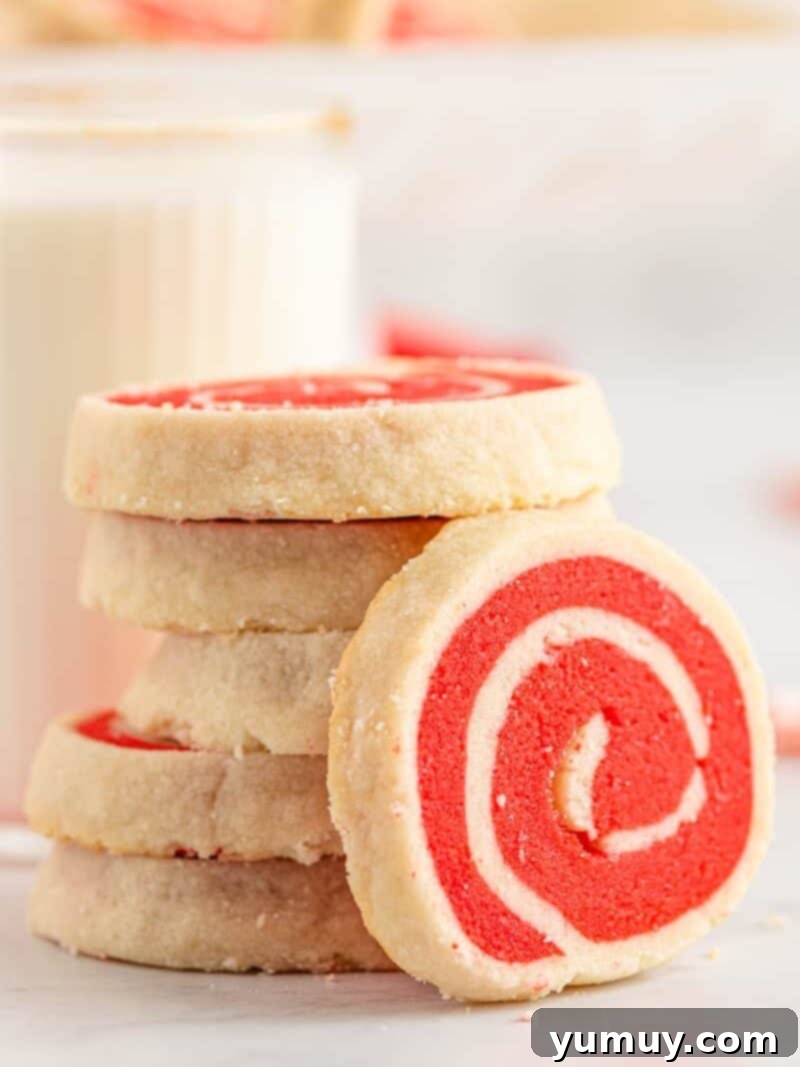
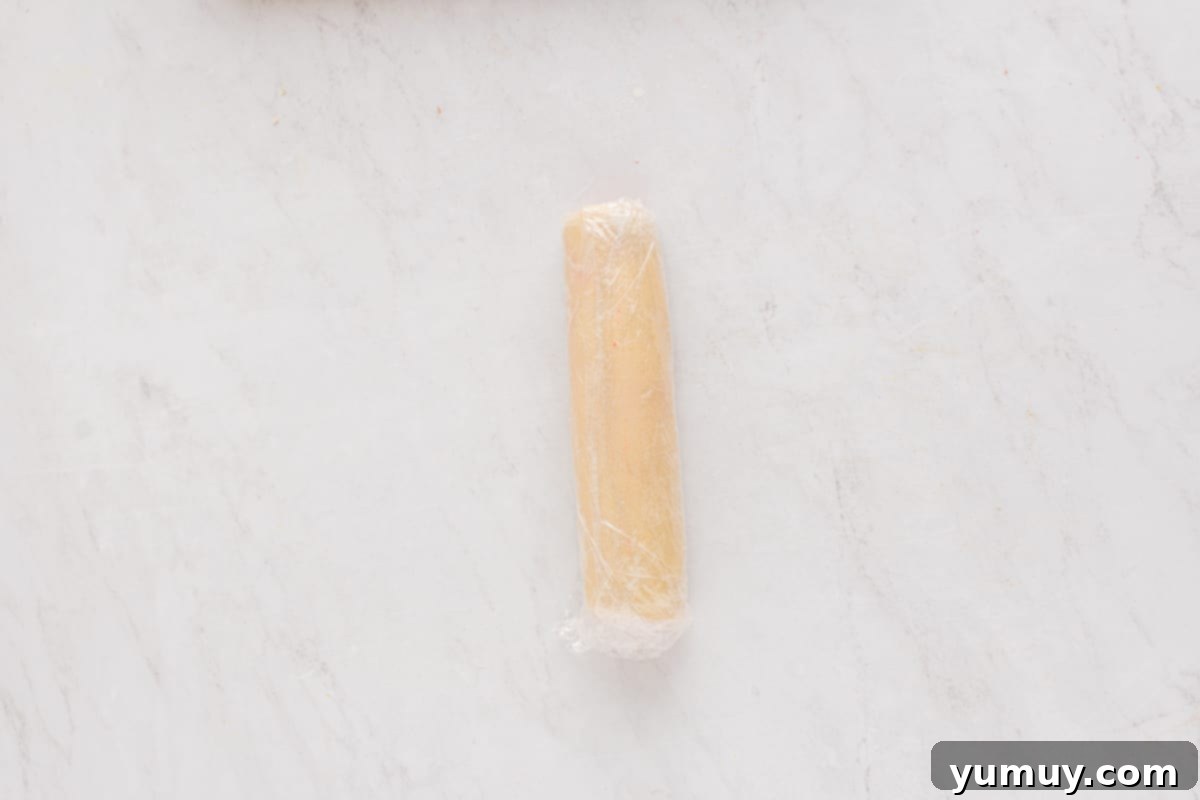
5. Refrigerator Cookies (Slice and Bake)
For the ultimate in make-ahead convenience and portion control, look no further than refrigerator cookies, also affectionately known as icebox cookies or slice-and-bake cookies. This clever method involves preparing a firm dough, shaping it into logs or cylinders, and then chilling (or freezing) it until firm. When a cookie craving strikes, you simply retrieve the log, slice off as many cookies as you desire, and bake them fresh. It’s a fantastic way to enjoy warm, homemade cookies with minimal on-demand effort.
The dough for slice-and-bake cookies is typically robust and holds its shape exceptionally well after chilling. This allows for beautifully uniform circular cookies, often with distinct patterns or layered designs (like pinwheels) created by combining different colored doughs. These cookies tend to have a satisfying chewiness and a slightly crisper edge than drop cookies, offering a delightful contrast in texture. The chilling process also deepens the flavors, making for a richer taste experience.
Dough Characteristics: Firm, dense, and sturdy enough to be rolled into a log and hold its shape perfectly when chilled. It’s less sticky than drop cookie dough and often has a good balance of fat and flour to prevent crumbling when sliced.
Baking Process: The pre-chilled dough log is sliced into uniform rounds (usually 1/4 inch thick) using a sharp knife. These rounds are then placed on a baking sheet and baked until golden at the edges. No shaping is needed right before baking.
Typical Outcome: Uniformly round with a consistent texture. They can be tender and chewy or crisp, depending on the recipe and thickness of the slice. The chilling time often enhances their flavor and creates a pleasant “snap.”
Examples: Classic sugar cookie logs, shortbreads, and festive pinwheel cookies are popular examples. The pre-made dough sold in grocery stores also utilizes this “slice-and-bake” concept.
What You’ll Need: Plastic wrap or parchment paper for shaping and wrapping the dough logs for chilling. A sharp chef’s knife or a serrated knife will ensure clean, even slices. A baking sheet is, of course, also necessary for baking.
Icebox Cookie Recipes to Try: Christmas Pinwheel Cookies, Shortbread Cookies, and Chocolate Butter Cookies.

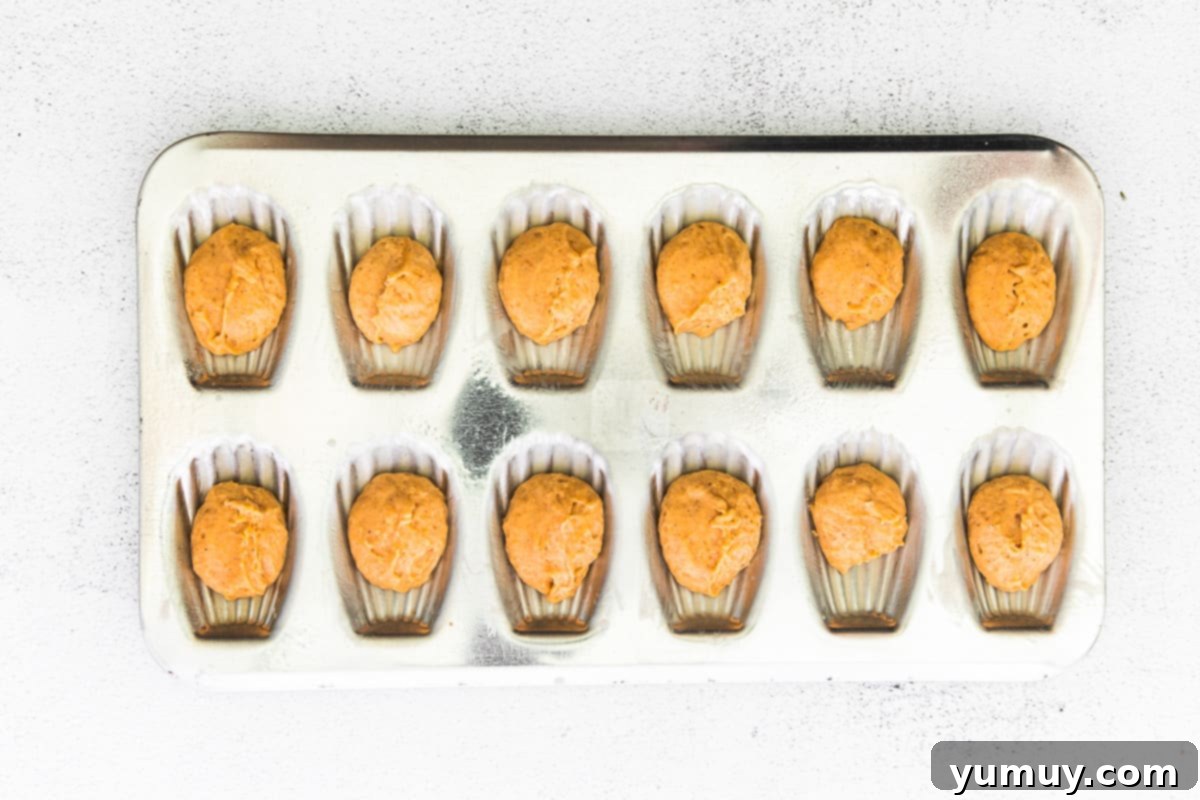
6. Molded Cookies
When artistry meets baking, you get molded cookies. This category encompasses cookies made from a dough that is firm enough to be shaped by hand, pressed into decorative cookie molds, or piped through a pastry bag to create various forms. While similar to rolled cookies in dough consistency, molded cookies often emphasize three-dimensional shapes and intricate patterns that are intrinsic to the cookie itself rather than applied as decoration afterward.
The dough for molded cookies must be relatively stiff and non-sticky, allowing it to hold precise imprints from molds or maintain its shape when hand-formed. Chilling is often beneficial to prevent sticking and ensure sharp details. From delicate madeleines with their iconic shell shape to simple peanut butter cookies with a fork imprint, molded cookies offer a wide spectrum of visual appeal and textural experiences, typically resulting in a firm, often crumbly or crisp cookie that preserves its sculpted design.
Dough Characteristics: Firm, somewhat dense, and holds its shape exceptionally well. It should be easy to work with by hand or press into molds without tearing. Butter-based doughs are common for their ability to take on fine details.
Baking Process: Dough is either hand-formed, pressed into specific cookie molds (e.g., madeleine pans, springerle molds), or piped. They are baked until set and lightly golden, being careful not to overbake to preserve tenderness and detail.
Typical Outcome: Crisp, tender, or sometimes crumbly, with distinct and often intricate shapes. They are known for their elegant presentation and ability to showcase detailed designs.
Examples: Peanut butter cookies with their classic criss-cross pattern from a fork, elegant madeleines baked in shell-shaped pans, traditional springerle cookies, and various meringue cookies are all wonderful examples of molded cookies.
What You’ll Need: Depending on the recipe, this could include silicone cookie molds, traditional wooden molds, piping bags with various tips for shaping, or even just a fork for simple hand-molding.
Molded Cookie Recipes to Try: Chocolate Madeleines, Chocolate Peanut Butter Cookies, Sprinkle Cookies, and Chocolate Meringue Cookies.

7. Filled and Stuffed Cookies
For those who love a delightful surprise in every bite, filled and stuffed cookies are a true treat. This category includes any cookie where the dough encloses another ingredient, creating a hidden pocket of flavor and texture. The filling is integrated before baking, meaning it melts, softens, or caramelizes along with the cookie dough, creating a harmonious blend of tastes.
The methods for incorporating fillings are diverse: dough can be wrapped around a solid item (like a chocolate kiss), pressed into a thumbprint to hold jam, or folded around a creamy filling. The dough itself needs to be pliable enough to manipulate around the filling without tearing, yet strong enough to contain it during baking. This type of cookie often offers a wonderful contrast between the cookie’s texture and the filling’s gooeyness, fruitiness, or richness.
Dough Characteristics: Often a soft, cooperative dough, similar to a drop cookie or a slightly firmer rolled cookie, that can be easily manipulated, wrapped, or indented without cracking. It needs to hold its shape around the filling.
Baking Process: The filling is placed within or on the dough before baking. The cookies are baked until the dough is cooked through and the filling is often warm and gooey or slightly set, depending on its nature.
Typical Outcome: A delightful combination of textures and flavors, with the warmth of the filling complementing the baked cookie. They are often tender and moist due to the enclosed filling.
Examples: Thumbprint cookies (filled with jam or chocolate), peanut butter blossom cookies (with a chocolate kiss pressed in the center), and cookies stuffed with Oreos or caramel are all fantastic examples of filled and stuffed varieties.
What You’ll Need: Your hands are often the best tools for shaping dough around fillings. Spoons or small scoops can help with portioning fillings. Cookie scoops can be used to form the initial dough ball before wrapping around a filling.
Stuffed Cookie Recipes to Try: Peanut Butter Cup Cookies, Cheesecake Stuffed Red Velvet Cookies, Oreo Stuffed Cookies, Chocolate Thumbprint Cookies, Nutella Stuffed Cookies.
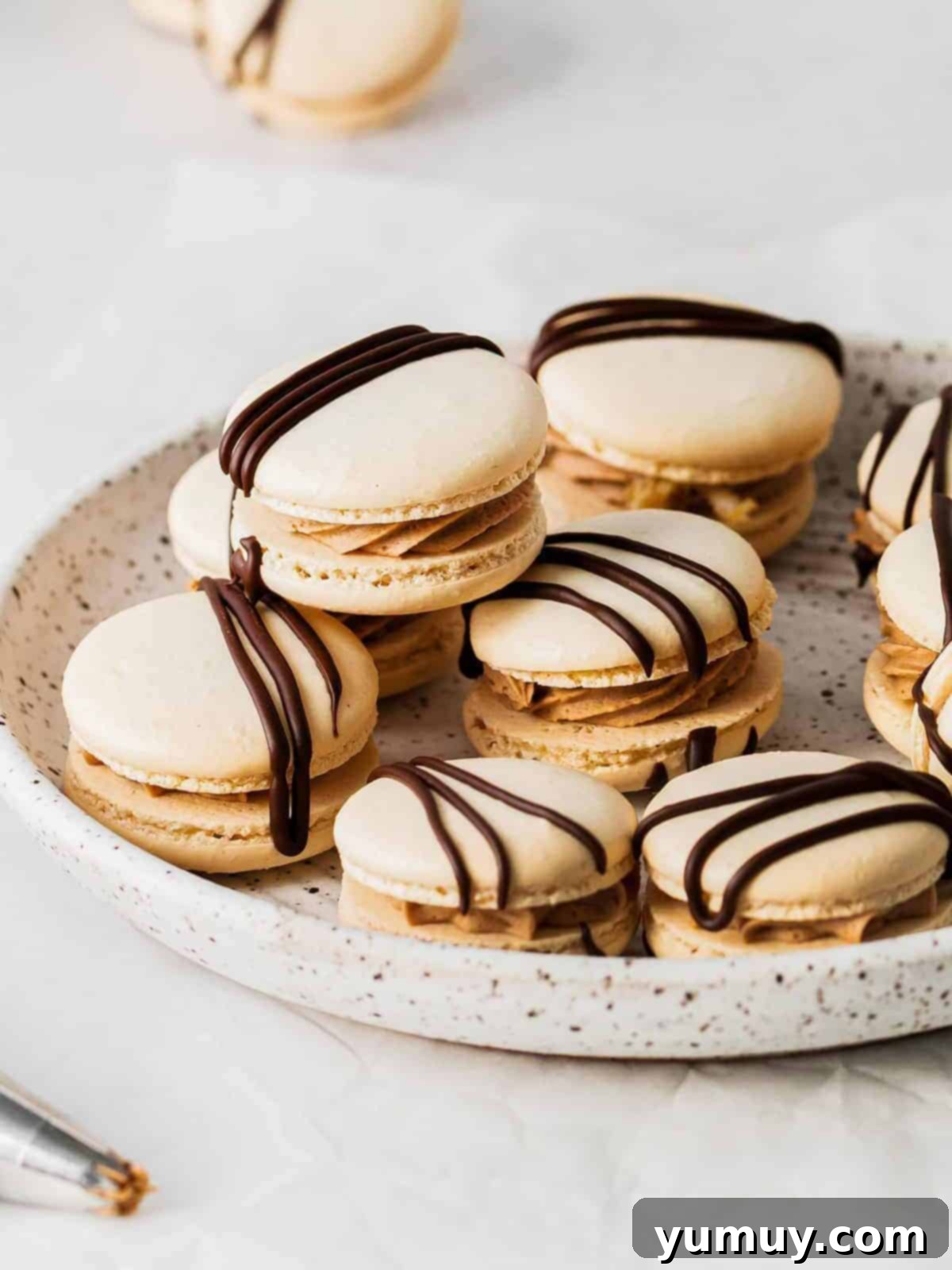
8. Sandwich Cookies
A true classic of comfort and indulgence, sandwich cookies are precisely what their name implies: two separate, baked cookies joined together with a delicious filling in the middle. Unlike filled cookies where the filling is baked within the dough, sandwich cookies are assembled post-baking, allowing for a distinct separation of the cookie and filling components. This method offers endless possibilities for flavor combinations and textural contrasts.
While almost any type of baked cookie can technically be made into a sandwich cookie, they are typically most successful with cookies that are soft, chewy, or tender enough to bite through easily without crumbling excessively. The filling can range from creamy frostings and ganaches to fruit jams, caramel, or even ice cream, providing a luscious counterpoint to the cookie halves. The visual appeal of sandwich cookies, with their neat layers, makes them a favorite for bakeries and home kitchens alike.
Dough Characteristics: Can vary widely, but typically uses a dough that bakes into a relatively flat, uniform cookie that is either tender and chewy or crisp but not brittle. Drop cookies or simple rolled cookies are common choices for the “bread” of the sandwich.
Baking Process: Individual cookies are baked and cooled completely. Once cooled, a filling is spread onto the flat side of one cookie, and then a second cookie is placed on top to create the sandwich.
Typical Outcome: A harmonious balance of cookie texture and creamy or sweet filling. The distinct layers offer a satisfying bite and a blend of complementary flavors.
Examples: The iconic Oreo cookie, delicate French macarons, homemade oatmeal cream pies, and whoopie pies are all perfect examples of the beloved sandwich cookie.
What You’ll Need: Your preferred cookie baking tools (baking sheets, scoops, etc.) for the cookie halves. For the filling, you might need a stand mixer for frostings, a piping bag for neat application, or simply a knife or spoon for spreading.
Sandwich Cookie Recipes to Try: Chocolate Macarons, Mocha Sandwich Cookies, and Carrot Cake Sandwich Cookies.

9. No-Bake Cookies
For those times when you crave a sweet treat but want to avoid turning on the oven, no-bake cookies are a culinary marvel. As their name unequivocally states, these cookies require no baking whatsoever. Instead, they rely on a process of cooking some ingredients (often on the stovetop) and then chilling the mixture to solidify it, allowing the cookies to hold their shape. They are a fantastic option for quick desserts, hot weather, or when oven space is limited.
Since no-bake cookies aren’t subjected to oven heat, their recipes typically feature ingredients that are safe and delicious to eat raw, such as oats, peanut butter, cocoa powder, shredded coconut, and various cereals. Eggs and traditional flour are often absent. The texture of no-bake cookies is usually soft, chewy, and dense, with a rich, often fudgy consistency. While not “cookies” in the traditional sense of baked dough, they offer the same satisfying sweetness and portionability, making them a beloved category in their own right.
Dough/Mixture Characteristics: The “dough” is actually a mixture of ingredients often cooked briefly on the stovetop (like sugar, butter, milk) and then combined with dry ingredients like oats, peanut butter, or cocoa. It’s sticky and spreadable when warm, firming up significantly when chilled.
Baking Process: Involves cooking a base mixture, combining it with dry ingredients, then dropping or pressing shapes onto parchment paper. The cookies are then chilled in the refrigerator or freezer until completely set and firm.
Typical Outcome: Soft, chewy, dense, and often fudgy or gooey. Their texture is distinct from baked cookies, often resembling a candy or fudge bar. They are rich in flavor and satisfyingly sweet.
Examples: Classic chocolate peanut butter no-bake cookies, haystacks (made with butterscotch and chow mein noodles), and various energy balls or granola clusters often fall into this convenient category.
What You’ll Need: A saucepan for cooking the liquid ingredients, a sturdy mixing bowl, and a baking sheet lined with parchment paper for shaping and chilling. A spoon or cookie scoop helps with portioning.
No-Bake Cookie Recipes to Try: Bird Nest Cookies, No Bake Nutella Cookies, and Chocolate Peanut Butter No Bake Cookies.

Unleash Your Inner Cookie Connoisseur
Understanding these nine fundamental cookie types is like gaining a superpower in the kitchen. It allows you to confidently approach any recipe, anticipate the texture and outcome, and even innovate your own unique creations. From the simple charm of a drop cookie to the intricate elegance of a molded design, each category offers a distinct baking experience and a delicious reward.
So, whether you’re a seasoned baker looking to perfect your craft or a beginner eager to explore the sweet world of cookies, this guide provides the essential knowledge to get started. Don’t be afraid to experiment, try new recipes, and discover your favorite cookie type to bake (and eat!). Happy baking, and may your kitchen always be filled with the irresistible scent of freshly made cookies!
Best Cookie Recipes to Try Next
Ready to put your newfound knowledge to the test? Here are some delicious cookie recipes across various types that you’ll love:
- Classic Butter Cookies
- Soft Sugar Cookies
- Chewy Chocolate Chunk Cookies
- Easy Strawberry Cake Mix Cookies
- Copycat Mrs. Fields Chocolate Chip Cookies
- Decadent Andes Mint Cookies
- Rich Chocolate Sugar Cookies
- Fun M&M Brownie Cookies
- Moist Carrot Cake Cookies
- Festive Easter Cookie Recipes
